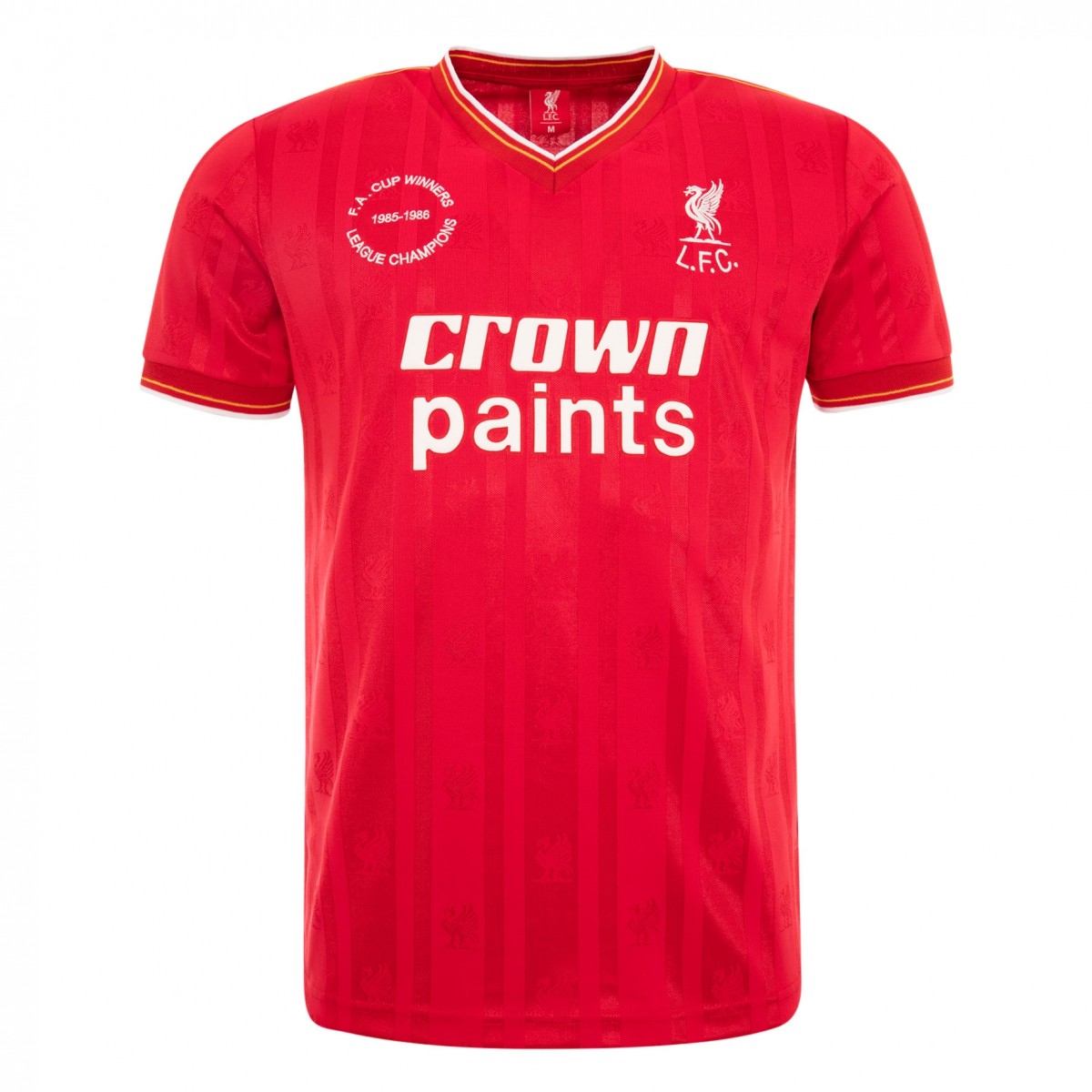Liverpool 66 jersey: A deep dive into the iconic kit worn during a pivotal year for the Reds. This article explores the design, cultural impact, and collectability of this piece of football history, examining its place within Liverpool’s rich heritage and the wider context of 1960s football fashion.
From the subtle design choices to the legendary players who donned the shirt, the 1966 Liverpool jersey represents more than just a piece of sporting apparel; it’s a tangible link to a significant moment in the club’s history. We delve into the historical context of the year, analyzing the team’s performance and the design elements that make this jersey so sought after by collectors and fans alike.
The article also examines the jersey’s evolution, comparing its design to both contemporary and modern Liverpool kits.
The Liverpool 1966 Jersey: A Retrospect: Liverpool 66 Jersey
The 1966 Liverpool jersey holds a significant place in the club’s rich history, representing a period of transition and burgeoning success. This article delves into the design, cultural impact, and collectability of this iconic piece of football memorabilia, offering a comprehensive look at its enduring legacy.
Historical Context of the 1966 Liverpool Jersey

1966 was a year of significant events for Liverpool Football Club. While the club didn’t win any major trophies that year, it laid the groundwork for future triumphs. Liverpool’s league performance in 1966 saw them finish in a respectable mid-table position, setting the stage for the greater achievements to come under Bill Shankly’s management. The 1966 jersey itself reflected this period of steady progress.
Its design, while simple, was representative of the era’s football kits, featuring a predominantly red body with white shorts, a common color scheme among English clubs at the time. The material was likely a heavier cotton or wool blend, typical of jerseys from that period, offering durability rather than the modern performance fabrics. The Liver Bird crest, though perhaps a simpler version than those seen today, was prominently displayed, showcasing the club’s identity.
Design Elements and Variations of the 1966 Liverpool Jersey
The 1966 Liverpool jersey displayed a classic design, reflecting the era’s aesthetic. Variations likely existed, potentially including a change kit (away jersey), although detailed records may be scarce. The club crest played a crucial role, acting as a visual representation of the club’s heritage and identity. Its evolution over time, from its initial design to the more refined versions seen today, reveals changes in design preferences and technological advancements in crest production.
Obtain recommendations related to manchester city x real madrid that can assist you today.
The jersey likely featured a simple round neck or a V-neck collar, and the stitching was probably a standard double-stitch or similar construction common in that era. Comparing the 1966 jersey to modern Liverpool jerseys highlights the significant changes in design, material, and manufacturing techniques over the years. Modern jerseys prioritize performance fabrics and incorporate advanced technologies, while the 1966 jersey’s charm lies in its simplicity and classic appeal.
| Type | Color | Material | Sponsor |
|---|---|---|---|
| Home | Red | Cotton/Wool Blend (likely) | None (likely) |
| Away | White or alternative color (uncertain) | Cotton/Wool Blend (likely) | None (likely) |
Cultural Impact and Significance of the 1966 Liverpool Jersey, Liverpool 66 jersey
Several key players donned the 1966 Liverpool jersey, contributing significantly to the club’s identity and future success. While specific anecdotes regarding the jersey might be limited, its significance lies in its representation of a pivotal period in Liverpool’s history, setting the stage for the club’s rise to prominence. The jersey serves as a tangible link to a specific era, embodying the spirit and style of Liverpool football during that time.
For fans and collectors today, the 1966 jersey holds nostalgic value, representing a simpler time in football and a crucial period in the club’s development. Its rarity and historical context contribute to its desirability among collectors.
Collecting and Valuation of the 1966 Liverpool Jersey
The value of an authentic 1966 Liverpool jersey is influenced by several factors, including its condition, provenance (history of ownership), and any associated historical significance. Authenticating a genuine jersey requires careful examination of its construction, materials, and markings, comparing it to known examples and consulting with experts in football memorabilia. A mint-condition jersey commands a significantly higher price than one showing significant wear and tear.
The presence of any player signatures or other unique features can also substantially increase its value.
- Condition: Mint condition significantly increases value.
- Provenance: Documented history of ownership adds value.
- Authenticity: Verifiable proof of authenticity is crucial.
- Player Signatures: Genuine signatures dramatically increase value.
Visual Representation of the 1966 Liverpool Jersey
The 1966 Liverpool jersey likely featured a deep, rich red, possibly with subtle variations in shade depending on the dyeing process and material used. The texture would have been relatively coarse, typical of cotton or wool blends from that era. The Liver Bird crest, likely embroidered, would have been a central design element, perhaps simpler in detail than later iterations.
The overall shape and fit would have been relatively loose and boxy, reflecting the styles of the time, in contrast to the more athletic, form-fitting designs of modern jerseys.
The Liverpool 1966 jersey stands as a testament to a bygone era in football, a time of simpler designs and passionate play. Its enduring appeal to collectors and fans alike underscores its significance not only as a piece of sporting memorabilia but also as a symbol of Liverpool’s rich history and enduring legacy. The jersey’s unique design and the stories surrounding its wearers continue to captivate, solidifying its place as a treasured icon within the club’s annals.

